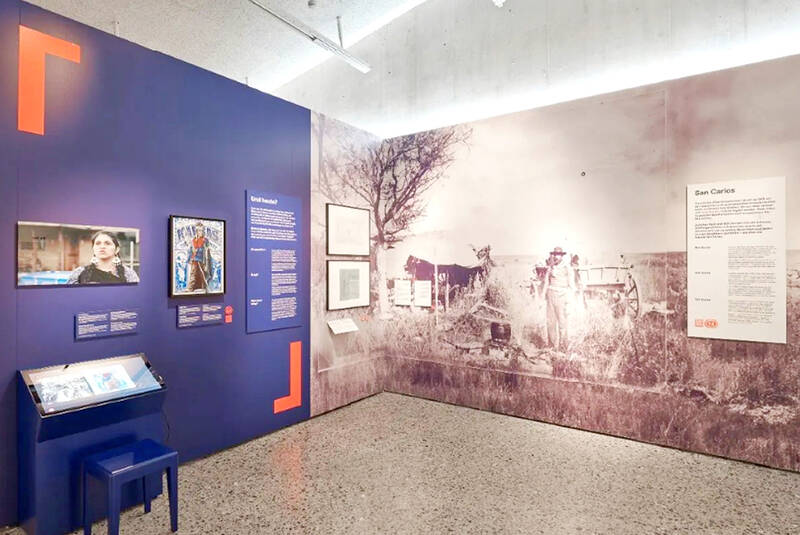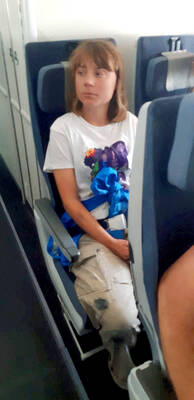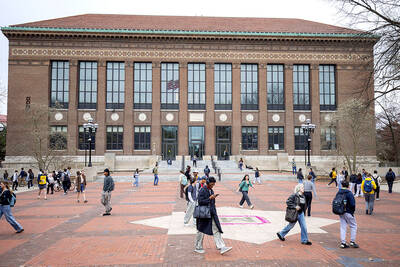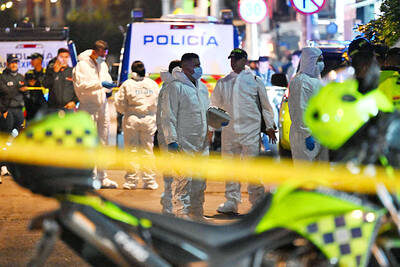Switzerland was never a colonial power, yet through its traders, mercenaries, anthropologists and missionaries, it contributed to colonial expansion, sparking debates about how to confront this lesser-known aspect of the nation’s past.
A new exhibition at the Swiss National Museum in Zurich is shedding light on this chapter in the Alpine nation’s history, in a bid to understand how Switzerland benefited from the colonial era.
“Swiss citizens and companies were heavily involved in the colonial system from the 16th century onwards,” the exhibition says.

Photo courtesy of Swiss National Museum via AFP
Entitled “Colonial: Switzerland’s Global Entanglements,” the exhibition presents objects and artifacts that bear witness to the landlocked country’s participation alongside the seafaring major European colonial powers.
It includes 18th-century cotton cloth used by Swiss traders as currency to buy enslaved people, sacks for loading goods such as cotton and cocoa onto ships, and a uniform jacket from a Swiss mercenary regiment that served the Dutch East India Company before switching to the British crown.
The regiment fought with the British alongside the future Duke of Wellington in the 1799 Siege of Seringapatam in India that overthrew Tipu Sultan of Mysore.
The exhibition also includes a collection of butterflies assembled by a wealthy merchant involved in a coffee plantation in Cuba cultivated by slaves, and the cap and whip of a Swiss national recruited as a civil servant in the Congo Free State in the early 20th century.
“It’s a difficult subject,” Swiss National Museum director Denise Tonella said. “It’s not easy to tackle an unflattering topic [but] it’s an important issue for today’s society.”
“Since the Black Lives Matter movement, there has been a lot of debate about colonialism and Switzerland,” Tonella said, with the exhibition aimed at providing the means to understand the issues.
In the wake of protests in the US in 2020 following the death of George Floyd, and the tearing down of a statue of a slave trader in the British city of Bristol, the Swiss city of Neuchatel was shaken by a controversy surrounding its statue of David de Pury, an 18th-century banker and merchant.
A major benefactor of his hometown in northwestern Switzerland, his statue was sprayed with red paint in 2020 and a group questioning his connections to the slave trade launched a petition to have it removed.
A compromise was reached, with the local authorities opting for an explanatory plaque and the installation alongside it of a critical artwork representing the statue upside down, with its head buried in the base.
“Different periods elicit different perspectives on history,” professor Georg Kreis wrote in the exhibition catalogue, adding that these issues had long “been repressed” at the academic level.
Since it had no colonies, Switzerland perceived itself “outside the wider European history, occupying a special status” as an “innocent country,” the historian said. “After the turn of the millennium, however, Switzerland’s focus on its colonial past took a different turn,” with academic study increasing over the past 20 years.
Drawing on this research, the museum set out to reflect on all facets of Swiss involvement, starting with the trade in raw materials and the trans-Atlantic slave trade that saw merchants and plantation owners rack up immense fortunes in the 18th century.
The exhibition, which opened on Friday and runs until Jan. 9, also sheds light on the Swiss naturalists and anthropologists behind racial theories used to justify colonialism.

Swedish campaigner Greta Thunberg was deported from Israel yesterday, the Israeli Ministry of Foreign Affairs said, the day after the Israeli navy prevented her and a group of fellow pro-Palestinian activists from sailing to Gaza. Thunberg, 22, was put on a flight to France, the ministry said, adding that she would travel on to Sweden from there. Three other people who had been aboard the charity vessel also agreed to immediate repatriation. Eight other crew members are contesting their deportation order, Israeli rights group Adalah, which advised them, said in a statement. They are being held at a detention center ahead of a

A Chinese scientist was arrested while arriving in the US at Detroit airport, the second case in days involving the alleged smuggling of biological material, authorities said on Monday. The scientist is accused of shipping biological material months ago to staff at a laboratory at the University of Michigan. The FBI, in a court filing, described it as material related to certain worms and requires a government permit. “The guidelines for importing biological materials into the US for research purposes are stringent, but clear, and actions like this undermine the legitimate work of other visiting scholars,” said John Nowak, who leads field

‘THE RED LINE’: Colombian President Gustavo Petro promised a thorough probe into the attack on the senator, who had announced his presidential bid in March Colombian Senator Miguel Uribe Turbay, a possible candidate in the country’s presidential election next year, was shot and wounded at a campaign rally in Bogota on Saturday, authorities said. His conservative Democratic Center party released a statement calling it “an unacceptable act of violence.” The attack took place in a park in the Fontibon neighborhood when armed assailants shot him from behind, said the right-wing Democratic Center, which was the party of former Colombian president Alvaro Uribe. The men are not related. Images circulating on social media showed Uribe Turbay, 39, covered in blood being held by several people. The Santa Fe Foundation

NUCLEAR WARNING: Elites are carelessly fomenting fear and tensions between nuclear powers, perhaps because they have access to shelters, Tulsi Gabbard said After a trip to Hiroshima, US Director of National Intelligence Tulsi Gabbard on Tuesday warned that “warmongers” were pushing the world to the brink of nuclear war. Gabbard did not specify her concerns. Gabbard posted on social media a video of grisly footage from the world’s first nuclear attack and of her staring reflectively at the Hiroshima Peace Memorial. On Aug. 6, 1945, the US obliterated Hiroshima, killing 140,000 people in the explosion and by the end of the year from the uranium bomb’s effects. Three days later, a US plane dropped a plutonium bomb on Nagasaki, leaving abut 74,000 people dead by the